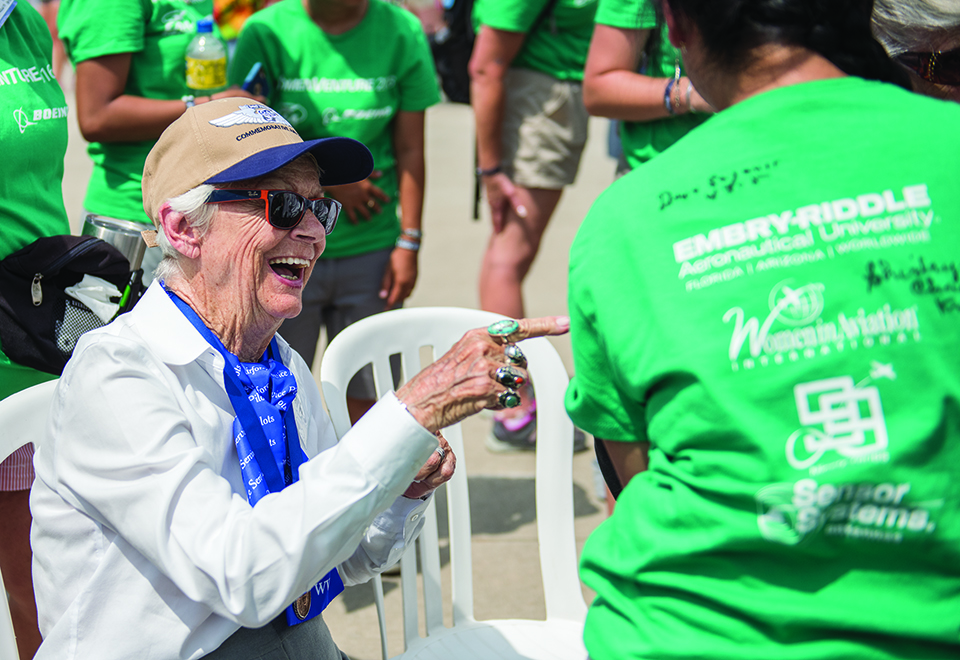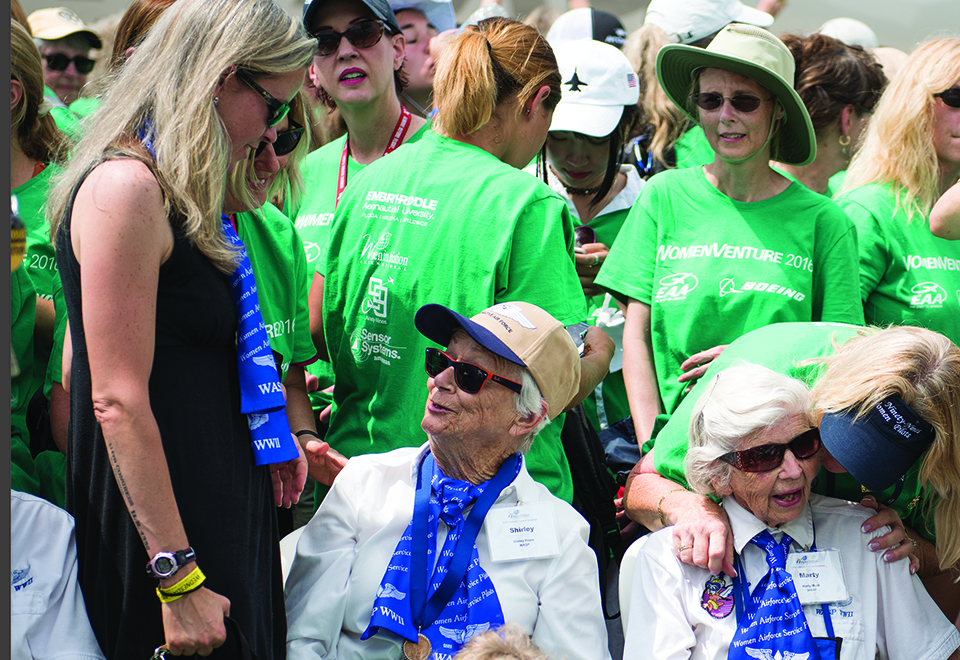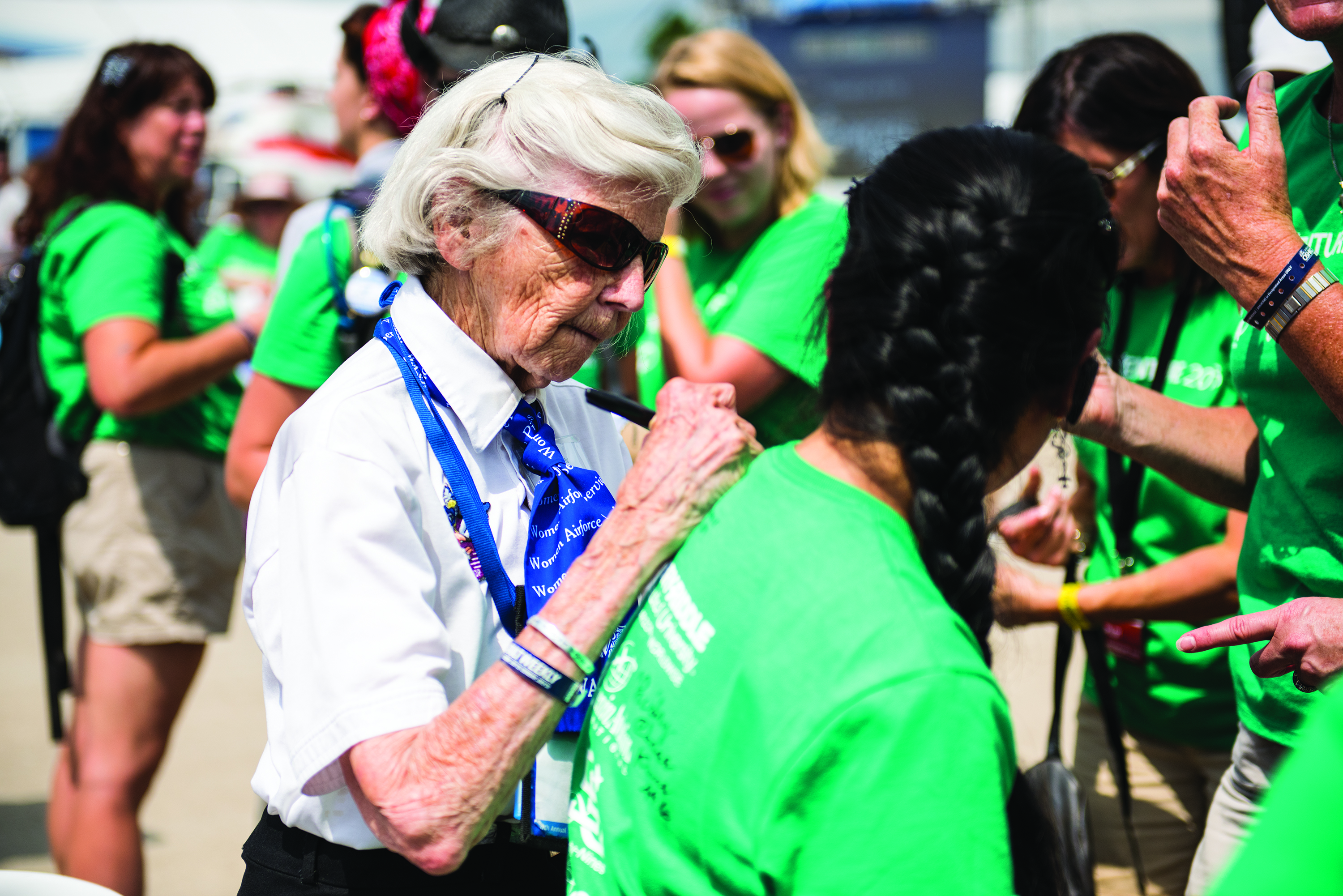Fearless WASP Heroes Tell Their Stories
‘Girls don’t do that’
By Barbara A. Schmitz
July 29, 2016 - Marty Wyall had been accepted to the Women Airforce Service Pilots and was already en route to the base when she received a telegraph from her parents that her papers weren’t in order. “I came home and found that my medical was missing, so I called the doctor and said why didn’t you send it in?” she recalled. He said: “It’s on my desk. I just don’t think women should be in the military.”
Shutsy Reynolds received a flight-training scholarship, only to have it taken away a week later. “Girls don’t fly,” they told her. “Girls don’t go to war.”
Dawn Seymour recalled the WASP program ending. “We were told to go home, that they didn’t need us anymore,” she said. “We said goodbye to our buddies and walked off the field. That was it.”
The women of WASP served an important part in America’s World War II victory. But for many decades, their story was left untold. Now, with only about 100 women of WASP remaining, these fearless women are finally being honored as aviation heroes.
Kate Landdeck, associate professor of history at Texas Women’s University who has studied WASP for decades, said the U.S. wasn’t doing too well in the war in 1942. “They needed pilots desperately, so the Army Air Force decided to give women a chance,” she said. “It was an experiment to see what they could do, and if they could even do it.”
Approximately 25,000 applied for the program, 1,800 were accepted and 1,074 graduated. They quickly showed the doubters that women could, in fact, do it.
The women of WASP flew military cargo around the country, transported planes to various bases, tested new planes, towed targets behind planes for men to practice shooting at, and trained male pilots going overseas.
Three of the four women of WASP attending EAA AirVenture Oshkosh 2016 talked about their lives in a well-attended forum on Thursday. The fourth WASP, Shirely Kruse, had a good excuse for missing the forum — a last-minute opportunity to fly in a P-51 Mustang.
Reynolds, 93, said as a child she always wanted to learn to fly, but her parents told her, “Girls don’t do that.” But she was determined, and later attended night school three times a week for three months. “After taking the class a couple of nights, I found out that several of the men had taken the course three or four times. The top five scorers on the written exam would earn flight scholarships, and I figured those guys would get it for perfect attendance if nothing else.”
But Reynolds was one of the top five, and not willing to just let that scholarship disappear when they took it away. She argued with them, and in the end, “they gave it back to me just to shut me up.”
She recalled soloing in eight hours, and on her next flight, wanted to show her parents that she could do a spin. “I started into a spin and the engine quit and then I was a glider pilot,” she said. “I was 12 miles from the airport, and at ground school we were always told that if you dive, the plane may start again. But I thought if I dive and it doesn’t start, I’ve lost all that altitude. So I decided to pick out fields along the way that I could land in, and suddenly there was the runway I had taken off from. I came in, made a 270-degree turn, came over a busy highway, cleared the fence and landed in almost the same spot I had taken off from.”
Reynolds doesn’t take credit for the successful landing. “Somebody up there liked me or somebody down there didn’t want me,” she said. “I got out of the airplane and I was excited. I looked up at the heavens and said, ‘Gods of aviation, I win!’”
Wyall, 94, was a junior in college when she saw two Navy units marching down the street and decided she wanted to apply to the WASP program. “I wanted to quit school and join, but my dad said I had to finish college and then make up my mind. They thought I’d forget about it.”
She didn’t, although the doctor who didn’t turn in her medical papers, almost cost her that opportunity. When she found out the doctor hadn’t turned in her medical form, she kept calm. “I told him no one should keep me from at least trying, and if I don’t make it, then it will be my fault. I asked him to give me a chance. And I did say a lot of other things, too.”
Finally, he agreed to send it in, and Wyall was accepted into the next — and very last — class.
In 1944 when they closed down Avenger Field and the WASP program, all the planes had to be ferried elsewhere. “It took us three days to do that,” Wyall said.
Seymour, 99, recalled soloing in New York on a windy and snowy day. “The airplane, a Piper Cub, was on skis that were frozen to the ground,” she said. “I had to use boiling water to get them free.”
Seymour said she had difficulty deciding whether she should become a WASP.
“I flipped a nickel — heads I would go, tails I would stay. It came up heads so I quit my job, packed and went to Rochester Airport to take some more lessons since I hadn’t had flying time in two years.”
After earning her wings, Seymour started ferrying planes, and then was ordered to Ohio where she learned to fly the B-17. “We flew days and nights, and we went to ground school in the afternoon,” she said. “We were completely emerged in aviation.”
The B-17 was the biggest airplane on the field at that time and she recalled one flight. “It was a velvet night, and I can remember lining up with the blue runway lights. I remember thinking, ‘I’m a pilot.’”
Seymour said she was excited at fly in the B-17 Aluminum Overcast during AirVenture. The WASP flight was scheduled for Friday night, with Aircraft Spruce & Specialty donating the flight.




